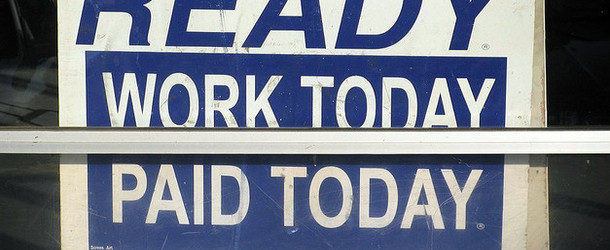
Typically, you pay a premium if you select a 30-year fixed mortgage versus an adjustable-rate mortgage.
The reason is simple – the interest rate is locked in and will not change during the entire loan term, which is a full 30 years, or 360 months.
Conversely, if you choose to go with an adjustable-rate mortgage, such as a 5/1 ARM or a 7/1 ARM, you only receive the benefit of a fixed rate for the first five or seven years, respectively.
It is then subject to change annually during the remaining 23 or 25 years of the loan term.
As such, you should be entitled to a discount on your mortgage rate during that initial fixed period to make up for the risk of the interest rate resetting higher once the fixed period ends.
This spread can change over time depending on what’s going on in the economy and secondary market, along with lender/investor appetite for certain products.
Today’s Menu: 30-Year Fixed or Bust
- Mortgage rates are usually highest on the 30-year fixed
- Because borrowers receive a fixed interest rate for a full three decades
- Discounts are typically given on riskier products like ARMs or shorter-term loans like the 15-year fixed
- But right now lenders aren’t passing along the usual discounts
At the moment, anything that isn’t a 30-year fixed mortgage is basically out of favor.
This is probably even more true with nonbank lenders and those who sell off their mortgages, as opposed to keeping them in their own bank portfolio.
This explains why you’re no longer seeing the usual discounts offered for loan products like ARMs, and in some cases, even shorter-term fixed-rate mortgages, including the 15-year fixed.
Once again, I traveled across the internet to see what mortgage lenders were advertising for their popular loan programs, and this trend is pretty clear.
| Lender | ARM or 15-Year Fixed Rate | 30-Year Fixed Rate |
| Bank of America | 3.375% (10/1 ARM) | 3.375% |
| BB&T | 3.375% (15-year fixed) | 3.375% |
| Chase | 3.49% (7/1 ARM) | 3.125% |
| Citi | 4.75% (7/1 ARM) | 3.875% |
| Citizens Bank | 3.375% (7/1 ARM) | 3.375% |
| Navy Federal | 2.375% (5/5 ARM) | 2.875% |
| Quicken Loans | 3.125% (10/1 ARM) | 3.375% |
| USAA | *3.50% (VA 5/1 ARM) | 3.50% |
| Wells Fargo | 3.625% (5/1 ARM) | 3.375% |
Bank of America is advertising a 30-year fixed for 3.375% with 0.786% discount points, and a 10/1 ARM for the same rate with 0.971% discount points. In this example, it’s actually more expensive to take the riskier loan product.
BB&T is charging the same 3.375% for a 30-year or 15-year fixed refinance rate, yet the APR is slightly higher on the 15-year.
Chase will give you a 30-year fixed for 3.125%, or a 5/1 ARM for the same price. If you want a 7/1 ARM, the rate jumps up to 3.49%. More risk for more money…that’s a sign of a messed-up mortgage market.
Citi is showing super wild mortgage rates, with the 30-year fixed 3.875% with 0.125% points, and the 7/1 ARM pricing at 4.75% with a full point charged. You’d be crazy to go with the ARM.
Over at Citizens Bank, they’re advertising a 30-year fixed for 3.375% with .50% discount points. Meanwhile, their 7/1 ARM features the same exact rate with .125% discount points.
So slightly cheaper in terms of closing costs, but the same exact rate. It wouldn’t make much sense for most folks to go with the ARM unless they absolutely knew they’d be selling before those seven years were up.
And right now, there’s not a whole lot of certainty in terms of what’s next for anyone.
Some mortgage lenders aren’t advertising or possibly even offering ARMs at the moment, including Better Mortgage and Guaranteed Rate.
Navy Federal seems relatively normal, with their 30-year fixed 2.875% with 1.25 points, and their 5/5 ARM pricing at 2.375% with 0.25% points.
That’s a discount of a half a percent, which is more of what you’d expect to see based on the risk profiles of both loan programs. This might be because they keep the loans they originate.
At Quicken Loans, you can get a slight discount on a 10-year ARM vs. a 30-year fixed, 3.125% instead of 3.375%.
Then there’s USAA, which is advertising a 30-year fixed VA loan for 3.50% with negative mortgage points of 0.375%, and a 5/1 ARM with “APR typically around 3.500%.” You have to call to get the scoop, but it doesn’t sound much cheaper.
Lastly, Wells Fargo is offering a 5/1 ARM for 3.625%, and a 30-year fixed for a cheaper 3.375%.
So again, you’d be better off taking the 30-year fixed, not only because the interest rate is lower, but it’s also fixed for the full mortgage term.
It’s All About the Plain Vanilla Home Loan Right Now
- Mortgage lenders are very skittish at the moment like all other businesses
- As such they’re sticking to their safest products like the 30-year fixed while also tightening underwriting standards
- This is partially because it’s easier to sell these types of loans on the secondary market to investors
- Expect it to be more difficult to find a home loan with exotic features for the foreseeable future
In summary, mortgage lenders are grappling with a lot of uncertainty, just like everyone else thanks to the coronavirus (COVID-19).
And when that happens, they flock to the safety and security of the 30-year fixed, similar to how investors flee the stock market and head toward government bonds, which are guaranteed to be paid back.
Speaking of being paid back, the Fed’s QE4 program targets agency mortgage-backed securities, such as those backed by Fannie Mae and Freddie Mac.
At the moment, banks and lenders are eschewing anything that isn’t super vanilla, aka basic and low-risk.
Those who are offering ARMs, jumbo loans and other traditionally riskier products are charging a premium in many cases since they don’t have the benefit of the Fed as a buyer.
Others are just removing them from their product menu, perhaps until the dust settles.
It’s reminiscent of the mortgage crisis that took place in the early 2000s, when lenders only originated boring old fixed-rate mortgages and ditched all the aggressive option ARMs, interest-only loans, and so on.
To make matters worse for some borrowers, they’re also upping minimum credit score requirements and getting tougher with their underwriting, whether it’s a lower max DTI ratio or a lower max loan-to-value ratio (LTV).
The name of the game is less risk, so if you’ve got a questionable loan scenario, it might be difficult to get funding right now.
Hopefully this is a short-term phenomenon, but no one knows for sure how long it will last.
Read more: What mortgage has the best interest rate?



